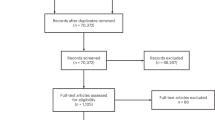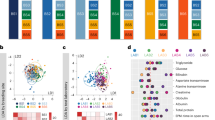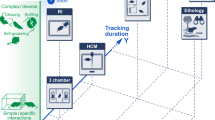Abstract
Most animals used in research are rodents, mainly mice because of their predominance in genetics and molecular biology. This article attempts to provide an introduction to mice and rats: health considerations (of the experimenter); choice of species, age, strain and sex; housing and environmental enrichment; and animal identification, handling and dosing. These considerations apply to animal work in general; the rest of the article focuses on the preliminary aspects of behavioral testing, including a protocol for an open field test. This procedure is traditionally associated with activity measurements, and although automated versions are readily available these days, the latter are expensive and may be unavailable in many non-behavioral departments. Moreover, particularly when testing novel genetically modified animals or pharmacological agents, there is no substitute for direct visual observation to detect abnormal signs in the animals: for example, ptosis, piloerection, tremor, ataxia or exophthalmos. The open field test can be adapted in several ways: to assess general behavior and activity (similar to a primary screen in the pharmaceutical industry) or to measure memory (habituation) or anxiety.
This is a preview of subscription content, access via your institution
Access options
Subscribe to this journal
Receive 12 print issues and online access
$259.00 per year
only $21.58 per issue
Buy this article
- Purchase on Springer Link
- Instant access to full article PDF
Prices may be subject to local taxes which are calculated during checkout




Similar content being viewed by others
References
Malakoff, D. The rise of the mouse, biomedicine's model mammal. Science 288, 248–253 (2000).
Crawley, J.N. What's Wrong with My Mouse? Behavioral Phenotyping of Transgenic and Knockout Mice (Wiley-Liss, New York, 2000).
Whishaw, I.Q. & Kolb, B., eds. The Behavior of the Laboratory Rat: A Handbook with Tests (Oxford Univ. Press, Oxford, 2005).
Saghal, A., ed. Behavioral Neuroscience, a Practical Approach Vols. I & II. (Oxford Univ. Press, Oxford, 1993).
Deacon, R.M.J. & Rawlins, J.N.P. T-maze alternation in the rodent. Nat. Protocols 1, 7–12 (2006).
Special issue devoted to laboratory animal allergy. ILAR J. 42 (1), (2001).
Betmouni, S., Deacon, R.M.J., Rawlins, J.N.P. & Perry, V.H. Behavioral consequences of prion disease targeted to the hippocampus in a mouse model of scrapie. Psychobiology 27, 63–71 (1999).
Jennings, M. et al. Refining rodent husbandry: the mouse. Report of the rodent refinement working party. Lab. Anim. 32, 233–259 (1998).
Van Loo, P.L.P. et al. Influence of cage enrichment on aggressive behavior and physiological parameters in male mice. Appl. Anim. Behav. Sci. 76, 65–81 (2002).
van Dellen, A., Blakemore, C., Deacon, R., York, D. & Hannan, A.J. Delaying the onset of Huntington's in mice. Nature 404, 721–722 (2000).
Lockard, R.B. The albino rat: a defensible choice or a bad habit? Am. Psychol. 23, 734–742 (1968).
Festing, M.F.W. Warning: the use of genetically heterogeneous mice may seriously damage your research. Neurobiol. Aging 20, 237–244 (1999).
Olton, D.S. & Samuelson, R.J. Remembrance of places passed: spatial memory in rats. J. Exp. Psychol. Anim. Behav. Proc. 2, 97–116 (1976).
Aggleton, J.P. The ability of different strains of rats to acquire a visual nonmatching-to-sample task. Psychobiology 24, 44–48 (1996).
Hyde, J. & Sawyer, T.F. Estrous cycle fluctuations in aggressiveness of house mice. Horm. Behav. 9, 290–295 (1977).
Guttman, R., Lieblich, I. & Gross, R. Behavioral correlates of estrous cycle stages in laboratory mice. Behav. Biol. 13, 127–132 (1975).
Farr, S.A. et al. Effect of ovarian steroids on footshock avoidance learning and retention in female mice. Physiol. Behav. 58, 715–723 (1995).
Kristal, M., Axelrod, S. & Noonan, M. Learning in escape/avoidance tasks in female rats does not vary with reproductive condition. Physiol. Behav. 21, 251–256 (1978).
Contet, C., Rawlins, J.N.P. & Deacon, R.M.J. A comparison of 129S2/SvHsd and C57BL/6JOlaHsd mice on a test battery assessing sensorimotor, affective and cognitive behaviors: implications for the study of genetically modified mice. Behav. Brain Res. 124, 33–46 (2001).
Deacon, R.M.J., Bannerman, D.M., Kirby, B.P., Croucher, A. & Rawlins, J.N.P. Effects of cytotoxic hippocampal lesions in mice on a cognitive test battery. Behav. Brain Res. 133, 57–68 (2002).
Deacon, R.M.J., Croucher, A. & Rawlins, J.N.P. Hippocampal cytotoxic lesion effects on species-typical behaviors in mice. Behav. Brain Res. 132, 203–213 (2002).
Deacon, R.M.J. & Rawlins, J.N.P. Learning impairments of hippocampal lesioned mice in a paddling pool. Behav. Neurosci. 116, 472–478 (2002).
Deacon, R.M.J., Penny, C. & Rawlins, J.N.P. Effects of medial prefrontal cortex cytotoxic lesions in mice. Behav. Brain Res. 139, 139–155 (2003).
Deacon, R.M.J. & Rawlins, J.N.P. Hippocampal lesions, species-typical behaviors and anxiety in mice. Behav. Brain Res. 156, 241–249 (2005).
Guenther, K., Deacon, R.M.J., Perry, V.H. & Rawlins, J.N.P. Early behavioral changes in scrapie-affected mice and the influence of dapsone. Eur. J. Neurosci. 14, 401–409 (2001).
Deacon, R.M.J., Reisel, D., Perry, V.H. & Rawlins, J.N.P. Hippocampal scrapie infection impairs operant DRL performance in mice. Behav. Brain Res. 157, 99–105 (2005).
Davis, H. Prediction and preparation: Pavlovian implications of research animals discriminating among humans. ILAR J. 43, 19–26 (2002).
Hall, C.S. Emotional behavior in the rat: I. Defecation and urination as measures of individual differences in emotionality. J. Comp. Psychol. 18, 385–403 (1934).
Walsh, R.N. & Cummins, R.A. The open field test: a critical review. Psychol. Bull. 83, 481–504 (1976).
Prut, L. & Belzung, C. The open field as a paradigm to measure the effects of drugs on anxiety-like behaviors: a review. Eur. J. Pharmacol. 463, 3–33 (2003).
File, S.E. Behavioral detection of anxiolytic action. in Experimental Approaches to Anxiety and Depression (eds. Elliot, J.M., Heal, D. & Marsden, C.A.) 25–44 (Wiley, Chichester, UK, 1992).
Barnett, S.A. The Rat: A Study in Behavior 2nd ed (Univ. of Chicago Press, Chicago, 1975).
Barnett, S.A. The Story of Rats: Their Impact on Us, and Our Impact on Them (Allen and Unwin, Crows Nest, NSW, Australia, 2001).
Hart, M. Rats (Allison & Busby, London, 1982).
Whishaw, I.Q., Metz, G.A., Kolb, B. & Pellis, S.M. Accelerated nervous system development contributes to behavioral efficiency in the laboratory mouse: a behavioral review and theoretical proposal. Dev. Psychobiol. 39, 151–170 (2001).
Acknowledgements
This work was supported by grant GR065438MA from the Wellcome Trust to the Oxford group.
Author information
Authors and Affiliations
Corresponding author
Ethics declarations
Competing interests
The author declares no competing financial interests.
Rights and permissions
About this article
Cite this article
Deacon, R. Housing, husbandry and handling of rodents for behavioral experiments. Nat Protoc 1, 936–946 (2006). https://doi.org/10.1038/nprot.2006.120
Published:
Issue Date:
DOI: https://doi.org/10.1038/nprot.2006.120
This article is cited by
-
Puerarin attenuates valproate-induced features of ASD in male mice via regulating Slc7a11-dependent ferroptosis
Neuropsychopharmacology (2024)
-
Anti-apoptotic effect of menaquinone-7 protects the brain of ovariectomized rats
Beni-Suef University Journal of Basic and Applied Sciences (2023)
-
Effect of simultaneous testing of two mice in the tail suspension test and forced swim test
Scientific Reports (2022)
-
Evolution of an increased performance under acute challenge does not exacerbate vulnerability to chronic stress
Scientific Reports (2022)
-
Characterisation of the Mouse Cerebellar Proteome in the GFAP-IL6 Model of Chronic Neuroinflammation
The Cerebellum (2022)
Comments
By submitting a comment you agree to abide by our Terms and Community Guidelines. If you find something abusive or that does not comply with our terms or guidelines please flag it as inappropriate.



